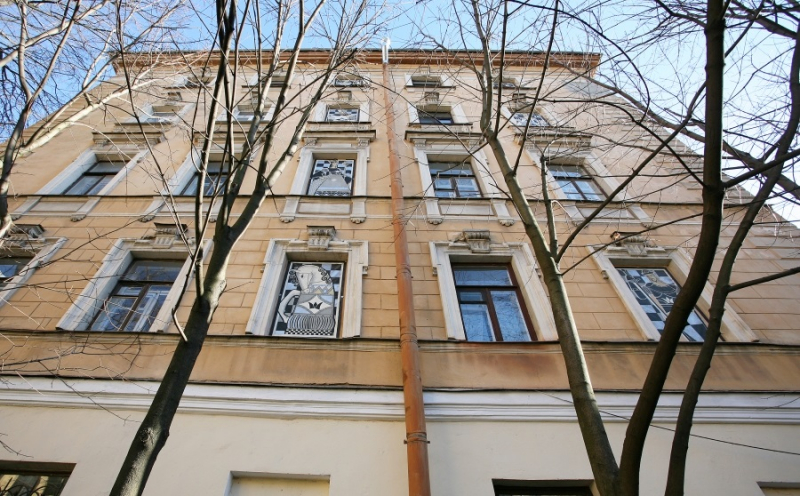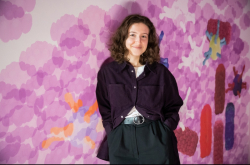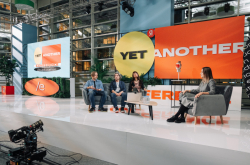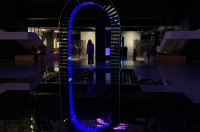There is a stereotype that a museum is an old former revenue house with showcased objects and paper labels. However, it’s not like that anymore. Modern museums implement VR technologies, video installations, motion sensors, and AR systems. The demand for such approaches to representation of art and history continues to grow.

Caption: Art Parking. The logo of the center. Credit: https://www.artparking.org/
You need two kinds of specialists to create such projects: museum specialists and engineers. ITMO University’s Faculty of Software Engineering and Computer Systems together with the Art ParkING center have organized AR+T, a student digital art festival, in order to once again highlight the importance of interdisciplinary collaboration. Its participants had to create projects for new digital elements of the Nikolai Rimsky-Korsakov Memorial Museum-Apartment collection.
“As we were discussing our cooperation, we realized that we have common thoughts and complementary ideas on how engineers and artists can work together,” says Dmitry Muromtsev, associate professor at the Faculty of Software Engineering and Computer Systems. “Then we received an inquiry from the museum – to think about two interactive exhibits. That’s how we came up with the idea for a festival at which students could suggest their ideas to serve the museum.”
Project work
Any Bachelor’s student could take part – all they had to do was to apply and attach a motivation letter. There were more than 30 applicants and eight of them made it to the finals.
The participants took a course on programming, complex multimedia, music, and museum design. The students formed two teams and were engaged in designing the prospective exhibits for the museum.
“The project work took place in April and lasted three weeks,” says Lidia Ader, head of the Art ParkING center. “It’s an extremely short period even for professionals, but students who have made it through the entire program have demonstrated great motivation and suggested interesting ideas.”
Historical booth and musical staircase
The first exhibit that the students were asked to turn into a multimedia object was the staircase that leads to the museum. The employees wanted to make it musical. The participants have developed this idea and, joined by Stepan Nikolaev, a student of the N. A. Rimsky-Korsakov Saint Petersburg State Conservatory, suggested several possible ways to interact with this object.
“According to the students’ idea, you can either walk on the staircase and hear separate notes or switch into a more immersive mode,” explains Lidia Ader. “Given that this is a museum of a great composer, the students have chosen several fragments of his masterpieces: Scheherazade, Flight of the Bumblebee, and so on. They will be integrated into the system and the person who touches the stairs will create a melody based on these works. Plus, it will be possible to interact with the staircase together – different people can activate different stairs and create unique melodies.”
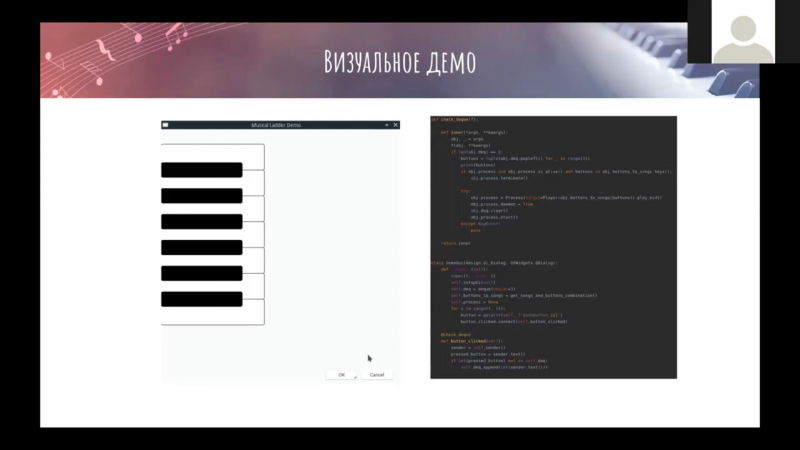
Caption: Visual demo. A slide from the presentation about the musical staircase
The second object that the students work on is an interactive booth located by the entrance. It will allow visitors to not only find information on the museum, but also play games, take quizzes, try on historical outfits, and so on.
“There is only one programmer on the team that was working on this project, the rest are students in fields related to art who only aspire to work in IT,” says Dmitry Zolotov, coordinator of the project. “So we have designed our course and project work in such a way as to not scare them off and show them how to achieve results using quite simplistic methods. For example, we have discussed the basics of working with such technologies as Processing, Flutter, and OpenFrameworks. As a result, the participants came up with an idea to use vibrations of a smartphone that has detected a QR code to let people with hearing disabilities perceive the melodies. They have also come up with an idea for an app that helps create artwork inspired by music: you can listen to a melody and draw what comes to mind. These images can be shared via email or with other users who have listened to the same melody and drew other pictures.”

Caption: Interface. A project of the interactive booth
The outcomes
The projects are to be implemented this autumn when the museum will celebrate its 50th birthday.
ART+T festival is also a part of the admissions process for Master’s programs of ITMO University’s Faculty of Software Engineering and Computer Systems. The participants not only will implement their projects but also have an opportunity to enter such programs as The Internet of Things Technologies, Computer Systems and Technologies, Web Technologies, Multimedia Technologies, Design and Usability, and Neurotechnologies and Software Engineering.
Moreover, according to Dmitry Muromtsev, the festival has proven that the faculty has potential programs to design.
“Museums, galleries, and theaters can become our new partners, together with which our students can implement their projects. As of now, we focus on technological companies but as you can see, there’s a demand for IT specialists in cultural institutions as well,” he explains.
AR+T festival may become a permanent platform for the interaction of specialists in the fields of culture, museum studies, and programming.
